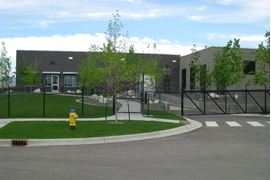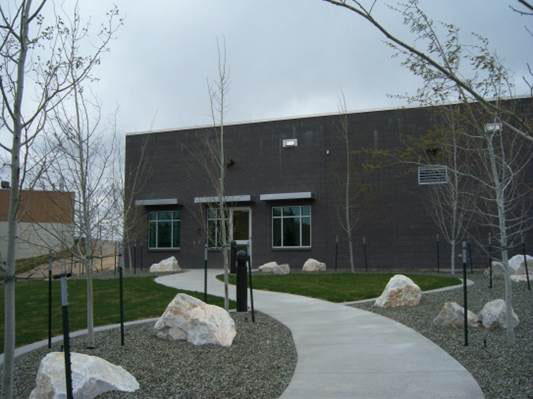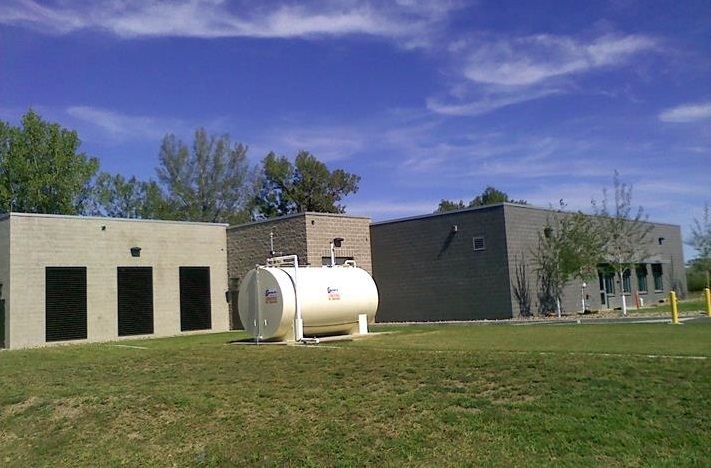State of Montana Data Centers
SITSD offers customers the efficiency and safety of two well-designed data centers, a 15,024-square-foot facility in Helena, MT, and a smaller 8,500-square-foot facility in Miles City, MT. The centers were built in 2010 to house and protect computers and communications equipment that store and process important electronic data for state government business operations and other government entities.
The centers in Helena and Miles City opened in late 2010 and currently house equipment and data for 18 Montana state agencies. Through a unique interstate governmental agreement, Montana’s data centers also house equipment and data for state of Oregon agencies.
The centers were funded through a 2007 appropriation made by the Montana Legislature. Both facilities are LEED certified and save the state of Montana an estimated $919,900 in annual energy savings at maximum capacity (the centers’ construction was part of a statewide initiative in 2010 to reduce all energy use in state-owned buildings by 20 percent).
In addition, the centers’ innovative design mitigates the impact of seismic activity and provides protection from other natural disasters. The centers are monitored with security cameras and accessible only to employees and other individuals who have completed the required security protocols.
Customers who are interested in data center services can contact the service desk.
HELENA DATA CENTER
 |
LOCATION: Helena, Montana (state capitol) MARKET SECTOR: Computer Farm/Data Center FACILITY SIZE: 15,024 square feet CAPACITY: Up to 13 rows of racks or 247 cabinets FACILITY PEAK LOAD: 1.0 megawatt (MW) EQUIPMENT: Heat Wheel, Kyoto Wheel System FUEL: Heat from electronic equipment USE OF THERMAL ENERGY: Heating/Cooling Data Center and Transportation Maintenance Building WHR TOTAL EFFICIENCY: 85 percent of conventional ENVIRONMENTAL BENEFITS: Leadership in Energy and Environmental Design (LEEDS) certified TOTAL PROJECT COST: $7.2 million YEARLY ENERGY SAVINGS: $919,900 (at cap) PAYBACK: 7.26 years IN OPERATION SINCE: August 2010 |
The SMDC in Helena was the first data facility in the United States designed and built from the ground up using an old technology with a new twist: the Kyoto wheel, built by Kyoto Cooling, Inc. Rotary heat exchangers, or heat wheels, have been used for a long time for industrial air conditioning systems, but not as a ventilation solution for data centers. Total Site Solutions designed the SMDC with a state‐of‐the‐art primary cooling system by Kyoto Cooling. The design is specific to data centers and emphasizes energy savings. The only power required is for the fans that move large volumes of air and a motor used to rotate the heat transfer wheels that absorb the hot air of the data center equipment.
The SMDC was designed with waste heat recovery (WHR):
- to avoid mixing hot and cold air;
- to use as much outside cooling air as possible;
- to better control system temperatures and reliability;
- to increase efficiency and to reduce energy costs; and
- to increase system redundancy.
 The rotary heat exchange system alone is sufficient 86 percent of the time, supplemented by computer room air conditioning (CRAC) units 10 percent of the time. The CRAC units operate solely only 4 percent of the time.
The rotary heat exchange system alone is sufficient 86 percent of the time, supplemented by computer room air conditioning (CRAC) units 10 percent of the time. The CRAC units operate solely only 4 percent of the time.
The SMDC also has a 99 percent efficient uninterruptable power supply (UPS) system that provides nine minutes of battery backup at 100 percent load. Two 1,000 kw diesel generators are also capable of providing backup power over extended periods of time. At the moment of utility power loss, the backup systems engage, balance the load, and synchronize until supply transfers back to the utility. A heat pump and air handlers heat and cool the staffed facility with an external glycol loop assisting the heating of a neighboring transportation maintenance facility.
This data center’s cooling system is 85 percent more efficient than a conventional data center. A conventional data center has a typical power usage efficiency (PUE) ratio of 2, where one part is from the cooling load, and the other is from the IT load. The SDMC PUE is 1.15, where the lower cooling load at SMDC represents “0.15”--an 85 percent savings compared to a conventional data center using computer room air conditioning (CRAC) units.
In addition, Montana’s transition from conventional servers to the SMDC has saved additional load and costs. The conventional load for the Department of Administration in Helena was 340 kw, but went to 58 kw when transferred to the SMDC—a cost savings of $247,032 annually just from the reduced information technology equipment load. With those additional savings, the payback on the SMDC is 7.26 years when at capacity.
In addition to reduced cooling costs, the SMDC is able to use more efficient computer equipment as it becomes available. For example, the uninterrupted power supply at the SMDC is 99 percent efficient, an improvement of over 18 percent of the past supplies. The current IT load is about 147 kw, and will grow as more state agencies move servers to the facility.
MILES CITY DATA CENTER
 |
LOCATION: Miles City, Montana (strategically located between two power grids) MARKET SECTOR: Computer Farm/Data Center FACILITY SIZE: 8,645 square feet TOTAL PROJECT COST: $5.5 million CAPACITY: Up to 6 rows of racks or 96 cabinets EQUIPMENT: Conventional CRAC units on data floor with underfloor cooling FUEL: Heat from electronic equipment DESIGN INCORPORATES: Leadership in Energy and Environmental Design (LEEDS) certified; Critical Infrastructure DOD Security Standards; Green Building Rating System IN OPERATION SINCE: August 2010 |
The Miles City Data Center is designed very similar to the Helena Data Center, but on a smaller scale. The Miles City facility represents a significant state investment in Eastern Montana. Construction contracts were awarded to Central and Eastern Montana businesses. The data center’s presence has fostered interest from government entities and companies outside of Montana. Both private and public sector organizations are looking at leasing opportunities available through the data center. The leasing of quality information technology hosting services at the data center is not available elsewhere in Eastern Montana.
